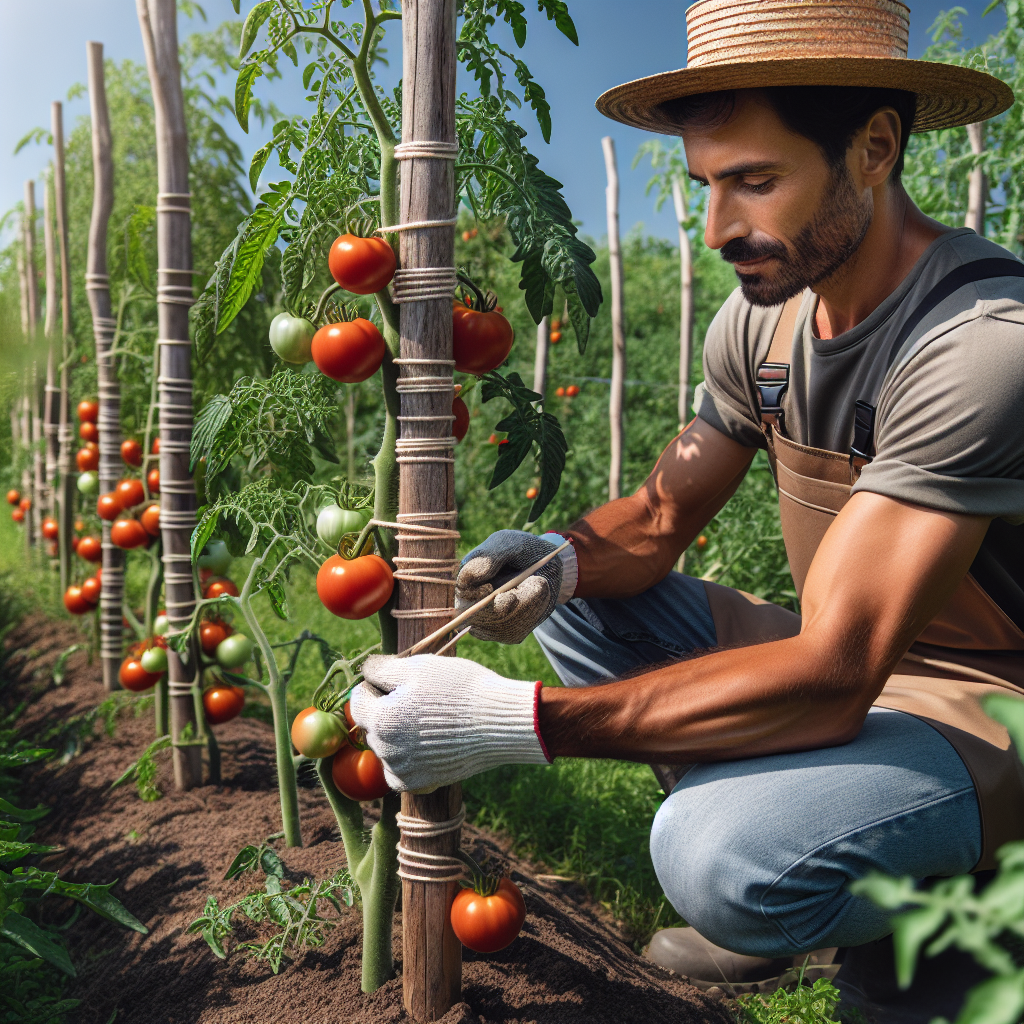
How to stake tomatoes after they ve grown
How to Stake Tomatoes after They've Grown: A Guide to Supporting Your Plants
Growing tomatoes in your garden can be one of the most fulfilling experiences for a gardener. However, once your tomato plants have thrived and begun to grow tall, you may find yourself wondering how to provide them the support they need to continue thriving. One of the best practices in keeping your tomatoes healthy is staking. In this article, we will discuss effective strategies for staking tomatoes after they’ve grown, exploring various methods and providing tips for ensuring your plants produce a bountiful harvest.
Understanding the Benefits of Staking Tomatoes
Before diving into the logistics of how to stake tomatoes after they've grown, it's essential to understand the rationale behind staking. Tomatoes are naturally sprawling plants that can grow vigorously. If left unstaked, they can become heavy with fruit, leading to several problems:
- Risk of Fungal Diseases: When tomato plants are on the ground, they become susceptible to soil-borne diseases and rot.
- Improved Airflow: Staking allows for better air circulation around the plants, reducing humidity levels and preventing mildew.
- Ease of Harvesting: Elevated plants make it easier to spot ripe tomatoes and reduce the hassle of bending down.
- Sunlight Penetration: Staked tomatoes can access sunlight more effectively, which is crucial for healthy growth.
Choosing the Right Materials for Staking
There are several ways to stake your tomato plants, and the materials you choose can influence how well they perform. The following are some options:
- Wooden Stakes: Sturdy wooden stakes can be driven into the ground next to each plant for direct support.
- Tomato Cages: Circular cages offer a self-contained structure for tomato plants to grow around.
- Wire Trellis: A trellis made of wire or strong fencing can be an excellent way to support multiple plants at once.
- String or Twine: Horizontal strings stretched between two posts can also be effective for holding up the branches of sprawling plants.
When to Stake Your Tomatoes
Timing is crucial for effective staking. Ideally, you want to stake your plants when they are still young and have not yet become overly heavy with fruit. A general rule of thumb is to stake your tomatoes:
- When they are about 12 to 18 inches tall.
- Before they start to flower and fruit, typically around 6-8 weeks after planting.
However, if you missed this window, don’t worry. You can still stake mature plants; just take extra precautions to avoid damaging the roots.
How to Stake Tomatoes after They've Grown: Step-by-Step Guide
Now that we've covered why and when to stake your tomatoes, let’s dive into the process:
Step 1: Assess Your Plants
Before staking, take a good look at your tomato plants. Check their height, stability, and how many branches are flowering or bearing fruit. This initial assessment will guide your staking method.
Step 2: Choose Your Staking Method
Depending on your assessment and the materials you've chosen, you might decide on one of the following methods:
- Single Stake Method: For indeterminate tomato plants, driving a sturdy stake about 6-12 inches from the base of the plant works best. Tie plants to the stake with soft twine or cloth strips.
- Cage Method: If you used a tomato cage, simply place it around the plant, ensuring it is secure and offers ample space for growth.
- Trellis Method: For a large number of plants, install a trellis and use horizontal strings to guide the plants upward. Tie the plants loosely to allow for growth.
Step 3: Secure the Plants
Using soft ties or cloth strips, carefully tie the main stem and any heavy branches to the stake or support structure. Make sure not to tie them too tightly, as this can damage the plant:
- Start at the base and tie a loose knot around the stem, leaving room for growth.
- Continue tying loosely as you move up the stem, securing any lateral branches as necessary.
- Monitor the progress of your plants; adjust ties as they grow.
Step 4: Maintain and Monitor Your Plants
Once you have staked your tomato plants, it's essential to keep an eye on their progress. Look for signs of distress or damage:
- Inspect for any branches that may be too tightly tied and risk cutting into the plant.
- Make sure that your stakes are sturdy and can support the increasing weight as the fruit develops.
- Regularly check the foliage for any signs of disease or pests that could weaken the plant.
Common Mistakes to Avoid When Staking Tomatoes
Staking can significantly improve the health and yield of your tomato plants, but there are common pitfalls to watch out for:
- Staking Too Late: Waiting too long to stake can lead to severe plant damage. Do it as soon as possible.
- Using Weak Supports: Ensure your materials are strong enough to support the weight of the fruit and branches.
- Over-Tying Plants: While you want your plants to be secure, leaving room for growth is crucial.
Conclusion
In summary, learning how to stake tomatoes after they've grown is an essential step in ensuring a fruitful harvest. By assessing your plants, choosing the right staking method, securing them properly, and monitoring their growth, you can help your tomatoes reach their full potential. With a little care and attention, you'll enjoy not only the beauty of your tomato plants but also the satisfaction of harvesting your homegrown tomatoes. Whether you’re a novice gardener or seasoned veteran, these tips will ensure your tomato plants are well-supported and thriving.
"Staking is not merely a support system; it's an investment in the health and productivity of your garden." - Gardening Expert
By Guest, Published on October 16th, 2024